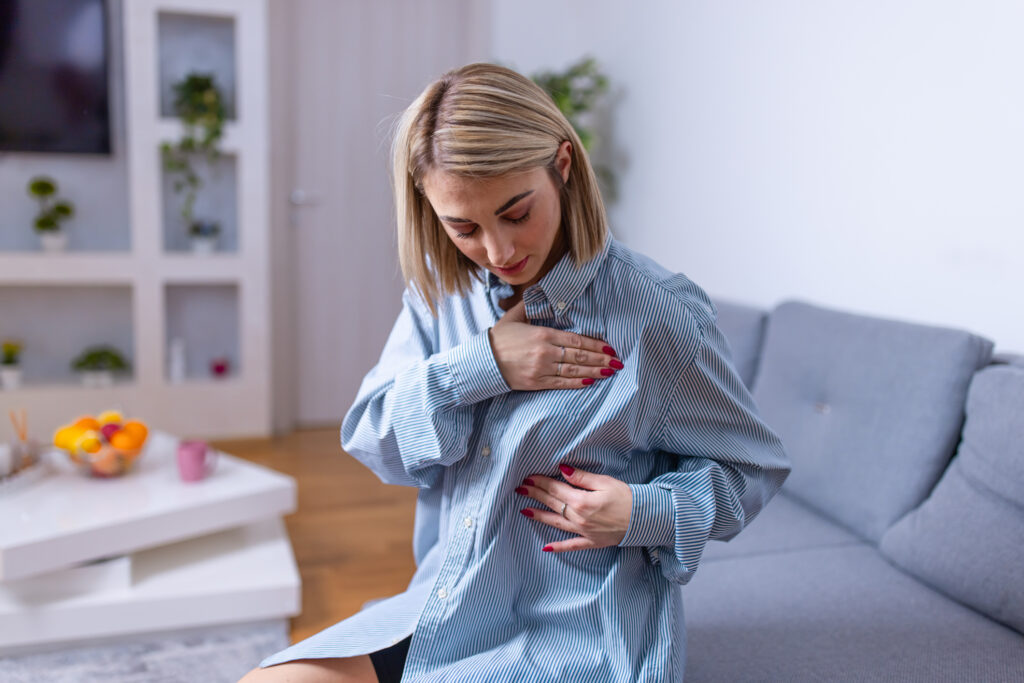Nearly 1 in 8 women in the US will develop invasive breast cancer in her lifetime, and 40% of diagnosed breast cancers are detected by women who feel a lump. Regular clinical exams are crucial, but performing self-exams at least once a month is equally important. A breast self-exam helps you understand the normal look and feel of your breasts, so you can detect any changes early. All women aged 20 and older should perform monthly breast self-exams. If you’re unsure how to do it, you’re not alone—it’s easier than you think, and we’re here to help. This 6-step guide will walk you through how to perform a breast self-exam and what to look for. If you find something concerning, schedule an appointment with your WIN Nurse Advocate or doctor to discuss next steps. As daunting as finding something can be, try not to panic until you have all the information you need to assess risk.
- Choose the Right Time: If you menstruate, perform your self-exam when your breasts are least tender—this is usually 7-10 days after your period ends. This is when hormonal changes have the least impact on your breast tissue.
- Visual Examination: Stand in front of a mirror with your shoulders straight and hands on your hips. Look for any changes in size, shape, or color, dimpling, puckering, redness, soreness, rash, or swelling on the skin of the breast, areola, or nipple.
- Arm Raise: Raise your arms and look for the same changes. Ensure there are no visible differences in your breasts from this angle.
- Nipple Check: Check your nipples for any discharge, including watery, yellow, milky (if not breastfeeding), or bloody fluids.
- Lying Down: Lie down on a flat surface and use the opposite hand to feel each breast. With your finger pads, move in small circular motions, covering the entire breast area from collarbone to abdomen and armpit to cleavage. Use both light and firm pressure to feel all breast tissue.
- Shower Exam: Many women find it easier to examine their breasts in the shower when their skin is slippery. Use the same circular motion technique described in step 5 to check every section of your breasts and under your arms.
What to Do If You Find a Lump:Don’t panic if you feel a lump in your breast. Many lumps are benign and caused by normal hormonal changes, benign breast conditions, or injuries. Schedule an appointment with your doctor to assess any symptoms you find. Early detection is key to managing breast health.
What to Expect at the Doctor:Your doctor will take a health history, perform a physical exam, and likely order breast imaging tests. For women under 30, pregnant, or breastfeeding, an ultrasound is often the first imaging test. Women over 30 and not pregnant may need both an ultrasound and a mammogram. If further testing is needed, your doctor may recommend additional imaging, a biopsy, or a referral to a breast specialist. Regardless of the plan your provider establishes, remember to take it one step at a time.



